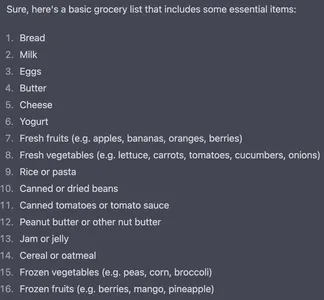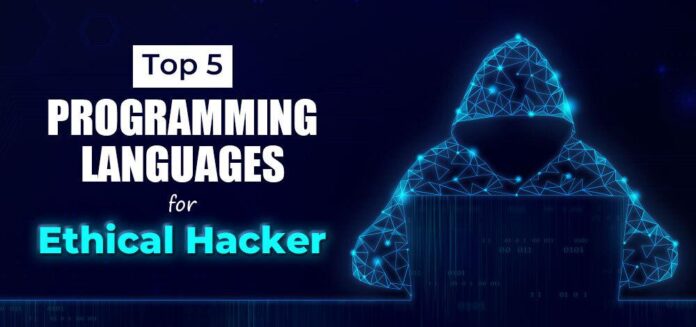What’s common between Alexa, Google, and Siri? Yes, you guessed it right! They are all AI-based virtual assistants using advanced machine learning algorithms and natural language processing. They can perform various functions like answering questions, providing information, setting alarms, playing music, etc. With AI innovations increasing globally, many AI-enabled products are getting introduced. Everyone has heard of ChatGPT by now! It is the latest viral sensation that has overtaken the world. It is said to revolutionize the face of AI for future generations. Let’s learn more about what is ChatGPT and its functions!
Table of contents
- What is ChatGPT?
- Features of ChatGPT
- History of ChatGPT
- How is ChatGPT Different From other AIs?
- How to Use ChatGPT?
- Applications for ChatGPT
- How to Use ChatGPT Prompts to make your Daily Work Easy
- ChatGPT Applications for Data Scientists
- Advantages
- Limitations
- Can ChatGPT Replace Google Search?
- What are Other Alternatives to ChatGPT?
- Way Ahead!
- Frequently Asked Questions
What is ChatGPT?
ChatGPT, an innovative chatbot designed by OpenAI and launched in November 2022, is a game-changer in the field of artificial intelligence. The name “ChatGPT” aptly describes its purpose, combining the word “Chat” to denote its chatbot functionality, and “GPT,” which stands for Generative Pre-trained Transformer, a cutting-edge language model.
ChatGPT is a text-generating tool that generates human-like text based on prompts or information. It is an AI tool that uses Natural Language Processing program and Reinforcement Learning with Human Feedback to work as a model which is easy for all individuals.
When asked to describe itself, ChatGPT states, “It is a powerful language model that can revolutionize the way we interact with and utilize artificial intelligence in our daily lives. Its ability to generate human-like text allows it to assist with a wide range of tasks that involve language processing, making it a valuable tool for businesses, researchers, and individuals alike”.
Features of ChatGPT
What makes ChatGPT stand out from other AIs?
- Human-like Text- With its Natural Language Processing program, ChatGPT produces text that appears human. When a user interacts with this AI, they wouldn’t know whether a human is behind that or an AI.
- Interactive Responses- Because it works on Reinforcement Learning with the Human Feedback model, it can generate responses interactively. This feature makes it inherently unique as it will constantly evolve and adapt as per the feedback provided and make it an application that will create long-lasting users.
- Translation of Texts- There are over 7000 languages in the world, and though English is the most widely used, this application helps in translating texts. With the technology constantly evolving, ChatGPT translate text from one language to another, making it easier for its users.
- Summarisation- People are really busy these days and don’t have time to read 10 pages long reports; thus, it summarise long texts. This would simplify a person’s work and save time.
- Personalized Content- With its advancement in machine learning algorithms, it can provide accurate and customized answers for a user leading to increased user engagement and conversions for businesses.
History of ChatGPT
In 2015, Elon Musk, Sam Altman, Reid Hoffman, and others started a non-profit AI research lab called OpenAI. OpenAI conducts AI research to advance and develop a friendly AI and is the mastermind behind ChatGPT.
Though the most famous, ChatGPT is not the first AI chatbot. ELIZA is the first-ever chatbot invented in the 1960s by Joseph Wizenbaum, a German-American computer scientist at the MIT Artificial Laboratory. ELIZA uses a Natural Language Processing (NLP) program, and it’s written to do pattern-matching and substitution methods to stimulate conversations. The earlier sister version of ChatGPT is InstructGPT, a tool that allows the users to train the model on specific tasks and generate text tailored to the user’s particular needs. InstructGPT and ChatGPT differ in the way they collect data. It launched as a prototype on 30 November 2022, and within five days, it had more than a million users.
Also Read: What is Generative AI? How can it Transform our Future!
How is ChatGPT Different From other AIs?
ChatGPT, with its Natural Language Processing program and Reinforcement Learning with Human Feedback, can process language using a deep learning technology called the Transformer architecture. This makes it more able to understand and appropriately react to user input. It can also generate apt responses to user inquiries without the need for predefined answers.
How to Use ChatGPT?
ChatGPT is relatively easy to use. The free version of it is open to the public, and anyone can use it by signing up or logging in through Gmail or email id.
Just open up your browser and type in https://chat.openai.com and type up your question, and you will get an AI-generated answer.

There is also a premium version of it called ‘ChatGPT Plus’ at $20/month, which includes access during peak hours, quicker response time, and priority access to the new and updated features.
Applications for ChatGPT
- Content Creation- It can be used for writing, content creation, etc. For example, it can help one write an essay for their school work or any other writing task one may have.
- Customer Service Industry- It can be used for building chatbots, customer service, and virtual assistants. With its almost human-like responses, it can be used as a chatbot to help aid the customers and would be cost-effective as a company wouldn’t have to pay for customer service representatives.
- Conduct Interviews- With its ability to give tailored answers, it can be used to conduct interviews and ask questions based on the answers given by the applicants.
- Virtual Assistants- It can be used as a virtual assistant to plan schedules, set appointments and reminders, etc.
- Straightforward Answers- It can comprehend and respond to various language inputs, and it can help find straightforward and uncluttered answers to a user’s questions.
- Digital Marketing- Because of its ability to learn from human feedback, ChatGPT can be used to create engaging and unique content for the ads of any company leading to higher conversion rates and customer interaction.
- Educational Purposes- With its Natural Language Processing tool and its ability to understand complex sentences and frame them in a simple format would make it very useful for the education sector. This would make learning easier and more interactive for the students. Students could also clarify their doubts and save time.
How to Use ChatGPT Prompts to make your Daily Work Easy
You can use the ChatGPT to do your daily tasks in a more efficient manner, such as follows:
1. Email Drafting
What was supposed to be a quick email can become time-consuming and tedious. String together all the right words to convey your message while maintaining the appropriate tone and corporate jargon is more difficult than it appears. ChatGPT is here to assist you.
For Example, when I type the following question in the ChatGPT, I get the following answer:
Could you please help me draft an email informing my manager that I have some meetings today and will have to leave in the middle of work today?

2. Get Motivated Before Tackling a Large Task
Nerves or jitters before a big task are a natural part of the human experience. A good pep talk or game plan can sometimes help you stay focused and zero in on the task at hand. You can ask ChatGPT for the best pre-event strategy instead of asking your colleagues, family, or even Google.
For Example, when I type the following question in the ChatGPT, I get the following answer:
I have a big meeting where I have to present my work, could you please give me some motivation so that I can give my best in that meeting?

3. Creating Basic Lists
As someone who enjoys making lists, this feature is a game changer for me. Lists are a great way to stay organized and avoid forgetting important tasks. Lists, on the other hand, can be time-consuming to create and frequently necessitate background research. When I go on vacation, for example, I usually Google packing lists to ensure I don’t forget anything and then use that information to create my own. You can simply ask ChatGPT to create the list for you.
For Example, when I type the following question in the ChatGPT, I get the following answer:
Can you make a grocery list with basic groceries?

4. Used in Social Media Posts
Create a selfie caption; whether you’re creating content for a personal or professional account, you might benefit from asking ChatGPT for caption advice. Finding a caption that is short and trendy but also applies to your picture can be difficult, especially for non-descriptive content like selfies. You can provide ChatGPT with as much information about your photo as you want for it to generate the perfect caption.
For Example, when I type the following question in the ChatGPT, I get the following answer:
I will post a selfie on Facebook. Could you please help me come up with some good captions?

Also Read: How to make money using chatGPT
ChatGPT Applications for Data Scientists
With ChatGPT gaining traction, exceedingly large utilization, and comprehensive skills, Data Scientists were worried that It might replace their jobs, but that’s not true.It performs data-related tasks but lacks creativity, human insights, and domain expertise. It can assist Data Scientists in the following ways-
- With the help of ChatGPT with its pre-trained models and APIs, data scientists can write code, do sentiment analysis, language translation, text categorization, etc. When stuck on a problem or with limited time, It can help with faster task completion with the help of its predictive modeling.
- It can help with data cleaning, preprocessing, and feature engineering by recommending methods to eliminate noise, handle missing values, and encode categorical data.
- It can help data scientists with model training and tuning by suggesting hyperparameters to optimize model performance and recommending techniques for avoiding overfitting.
- It, with its vast knowledge incorporated into it, can solve complex analytical problems for data scientists. It can also help with Exploratory Data Analysis by producing summaries and hypothesis testing.
- It can help data scientists find the appropriate data sets.
- Data scientists can also use ChatGPT as a conversational interface to interact with their data. They can ask questions, provide commands, and receive responses in natural language, which can help them to work more efficiently.
- It can generate insights by analyzing large volumes of data and identifying patterns, trends, and anomalies. Data scientists can use these insights to make data-driven decisions.
Also Read: How to Use ChatGPT as a Data Scientist?
Advantages
- Frugal- It can help save money. Since it can offer assistance and customer care, it can reduce the number of customer service representatives and save money for any organization or business.
- Swift and Immediate Responses- With its quick responses, it can respond quickly to customers’ queries efficiently, leading to higher customer gratification and saving the users from having to stay on hold for extended periods.
- Conversational Tone- To make their users more inclined to use ChatGPT, this AI-generated chatbot, with its conversational tone and tailored responses, can help improve consumer satisfaction.
- Social Media Platforms- AI is famous for getting new clients and being more active on all social media platforms. It can handle common queries and provide support while providing insights into what topics are currently trending and how users engage with the content.
- Decline Inappropriate User- Because of its technology to interpret written text, it can also identify and decline inappropriate requests by a user. This could also become useful for identifying cyberbullying, inappropriate texts, spam texts, etc.
- History Feature- With its history feature helping remember what a user asked earlier, it can modify and alter answers based on past conversations to give the best possible answers to its user. It doesn’t retain any personal information or identifiable data about its users.
Limitations
- Contextual Understanding- It lacks contextual understanding as it generates responses based on the input given by the user, making it difficult to have natural conversations.
- Training Data- Because it is a machine in a sense and cannot function independently without human input. Thus, it requires a large amount of training data to generate accurate responses.
- Bias- Because humans do the information fed to them and there is a large amount of data, it can create bias, and it might not be able to produce reliable responses.
- Limited Knowledge- The has limited knowledge because the knowledge of the world and events which have been fed to the model is after 2021 and hence may occasionally generate incorrect information.
- Clarifying Questions- Though it gives human-like responses, it does not ask clarifying questions when a user requests an ambiguous query.
- Inconsistent Responses- It generates responses based on statistical patterns it has learned from the large dataset it was trained on. If a phrase is slightly tweaked, it can give inconsistent responses. And because it is trained on Natural Language Processing program, which is a complex computational technique, a single phrase or sentence can have multiple interpretations or meanings.
- Limited Capacity- Even with its human-like responses, it has a limited capacity for processing extended chats because it cannot understand the nuances of human conversation, such as social cues, humor, sarcasm, and emotions.
Also Read: This is How Experts Predict the Future of AI
Can ChatGPT Replace Google Search?
Google is one of the most widely used search engines in the world, and it revolutionized the modern technology of the Internet so much that instead of a noun, it became a verb. For example: “I don’t know the meaning of this word; why don’t I Google it?”
ChatGPT is said to overtake Google Search. However, whether or not it is an ideal alternative to Google as a search engine is debatable because, at the end of the day, it depends on the specific needs and preferences of the user. For instance, a user may value a direct and crisp answer over receiving links to websites as search results.
What are Other Alternatives to ChatGPT?
ChatGPT isn’t the only available AI bot, though it is the most famous. There are also many alternatives present. The top 4 alternatives for ChatGPT are:
1. Google Bard
Google Bard is an experimental conversational AI service powered by LaMDA. It is currently not open to the public, and only the “trusted testers” are privy to that AI bot.
2. Chatsonic
Chatsonic is the “alternative for ChatGPT built with superpowers.” This AI chatbot comes backed by more features and broader knowledge as it can access the Internet, which is something CHatGPT still can’t do.
3. Jasper Chat
Jasper Chat is also a relatively new chatbot based on GPT 3.5. It is specifically built for businesses and offers marketing, advertising, sales, and more features.
4. Character AI
Character AI is an upcoming chatbot application where a user can choose from various personalities with whom they want to interact with. Its unique feature is that based on the character you choose, the conversational manner of AI would change accordingly.
Way Ahead!
ChatGPT is a still-growing AI technology with its powerful and versatile Natural Language Processing tool that has the potential to revolutionize the way we interact with technology. Its full potential is yet to be tapped. With regular updates, it can be improved in areas lacking as there is ongoing research and development which is happening in the field of Natural Language Processing, and it is likely to continue to improve the capabilities and performance of these models over.
We hope with this blog; you learned the following:
- The history behind ChatGPT
- The features, advantages, and limitations of ChatGPT
- The applications of ChatGPT for people in general and specifically for Data Scientists.
- Alternatives available for ChatGPT
Frequently Asked Questions
A. ChatGPT is an AI language model developed by OpenAI for various language tasks such as natural language processing, question-answering, and text generation.
A. ChatGPT is not a commercial product and is not available for purchase. However, it can be accessed for free through various platforms and applications integrating the technology.
A. GPT stands for “Generative Pre-trained Transformer,” which refers to the architecture and methodology used to train the language model.
A. ChatGPT is not available for individual purchase and usage but can be accessed for free via various platforms.
A. ChatGPT is not open source but built on top of open-source technologies like TensorFlow and PyTorch.
A. ChatGPT is developed by OpenAI, a private research company focused on advancing artificial intelligence safely and beneficially.

